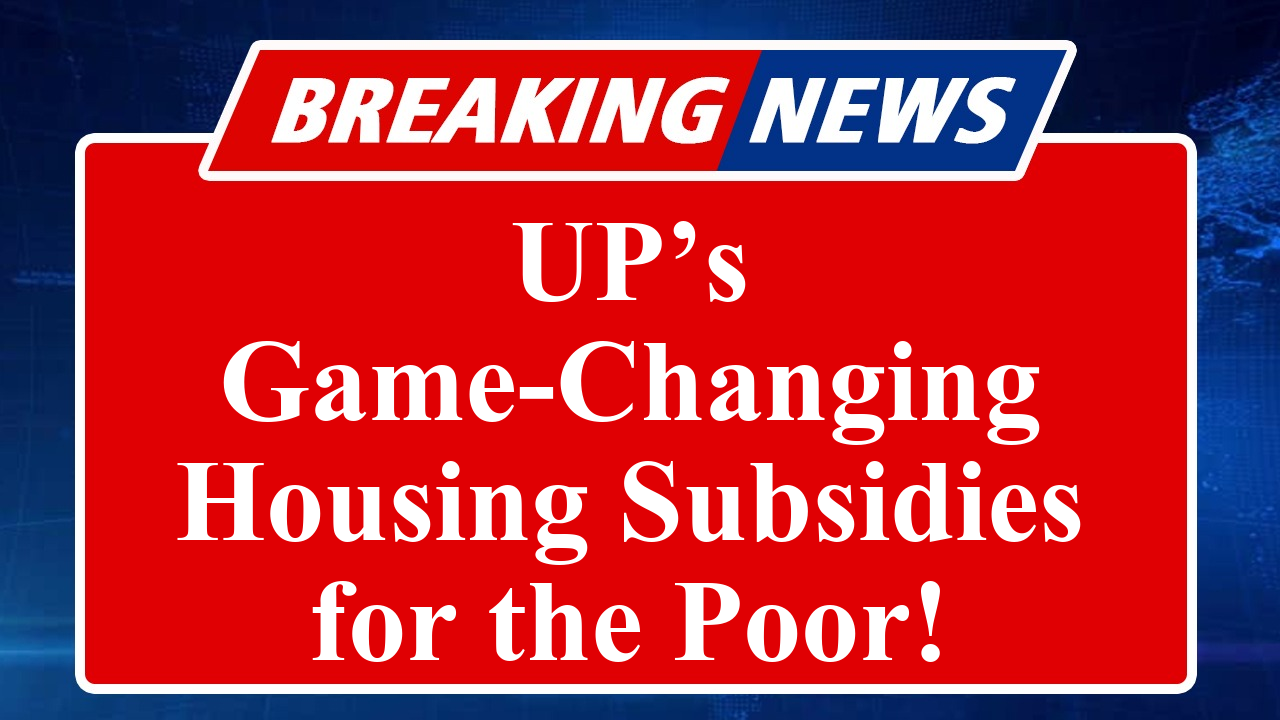Uttar Pradesh is intensifying efforts to provide affordable housing for low-income families through schemes like PMAY and state-led initiatives. Subsidies, grants, and interest rate relief are helping thousands own homes, with projects like Awadh Vihar Yojana offering flats at reduced costs. Despite progress, challenges like uneven coverage and documentation hurdles persist, impacting the state’s urban and rural poor.
Uttar Pradesh Ramps Up Affordable Housing with Subsidies for the Poor
Uttar Pradesh, grappling with a housing shortage of over 3 million units, is leveraging central and state schemes to make homeownership accessible for low-income families. The Pradhan Mantri Awas Yojana (PMAY), launched in 2015, remains the cornerstone of these efforts, targeting the Economically Weaker Sections (EWS), Low-Income Groups (LIG), and Middle-Income Groups (MIG). Under PMAY-Urban, the state has sanctioned over 6,000 housing projects in cities like Allahabad under the Beneficiary-Led Construction (BLC) scheme, offering financial assistance of up to ₹1.5 lakh per household for EWS families. The Credit Linked Subsidy Scheme (CLSS) provides interest subsidies of 6.5% for EWS, 4% for MIG-I, and 3% for MIG-II on home loans up to ₹6 lakh, ₹9 lakh, and ₹12 lakh, respectively, easing the financial burden for first-time buyers.
In a notable initiative, Chief Minister Yogi Adityanath announced the allocation of 1,040 flats in Lucknow’s Awadh Vihar Yojana under PMAY-Urban, priced at ₹12.59 lakh each, with a grant of ₹7.83 lakh from central and state governments. Beneficiaries pay only ₹4.76 lakh, making homeownership viable for the urban poor. The state’s Urban Development Agency (SUDA) and the Uttar Pradesh Housing and Development Board (UPHDB) are also rolling out projects in cities like Moradabad, Sultanpur, and Meerut, with flats priced as low as ₹4.5 lakh after subsidies. For instance, UPHDB’s Awadh Vihar Yojana in Lucknow offers 4,752 flats, requiring a modest down payment of ₹25,000 and monthly instalments of ₹3,675 over 60 months.
The Affordable Rental Housing and Complexes (ARHC) scheme, approved in 2021, targets urban migrants, factory workers, and students, providing affordable rental options in cities. This initiative addresses the needs of transient populations who often live in slums or informal settlements to save on rent. Additionally, PMAY-Gramin supports rural families with ₹1.2 lakh for constructing pucca houses in plains and ₹1.3 lakh in hilly areas, coupled with 90 days of employment under MGNREGA.
Despite these strides, challenges remain. Data from 2024 indicates that Uttar Pradesh has achieved only about 50% coverage of its housing demand under PMAY-Urban, lagging behind states like Gujarat and Tamil Nadu. The demand-driven approach of PMAY means eligibility and sanctions depend on state assessments, often leaving out families without land or sufficient capital. Documentation requirements, such as Aadhaar, income proofs, and property documents, pose hurdles for the poorest, particularly slum dwellers. The state is addressing these gaps through initiatives like the Slum Improvement and Clearance Scheme, which focuses on providing basic amenities to slum residents.
Private sector involvement is also boosting efforts. Partnerships under PMAY’s Affordable Housing in Partnership (AHP) component ensure at least 35% of houses in projects are for EWS families, with central assistance of ₹1.5 lakh per unit. Companies like ICICI HFC offer schemes like Apna Ghar, providing subsidies up to ₹2.67 lakh and flexible repayment terms, even for those without formal income proofs. The state is also experimenting with innovative construction under the Global Housing Technology Challenge, with projects like the Light House Project in Lucknow using new technologies to complete 1,040 flats in just 15 days.
Uttar Pradesh’s housing push aligns with the central government’s “Housing for All” mission, but the state’s large population and high poverty levels demand sustained efforts. With over 4.21 crore houses completed nationwide under PMAY by 2024, Uttar Pradesh’s contribution is significant yet insufficient to bridge the gap entirely. The government is now exploring increased financial assistance under PMAY-Gramin to counter rising construction costs and plans to expand urban housing subsidies to further empower low-income families.
Disclaimer: This article is based on recent news reports, government announcements, and publicly available data from sources like the Pradhan Mantri Awas Yojana portal, Economic Times, Hindustan Times, and other credible outlets. Information is accurate as of August 2025, but policies and figures may evolve. Readers are advised to verify details with official government sources before applying for schemes.

